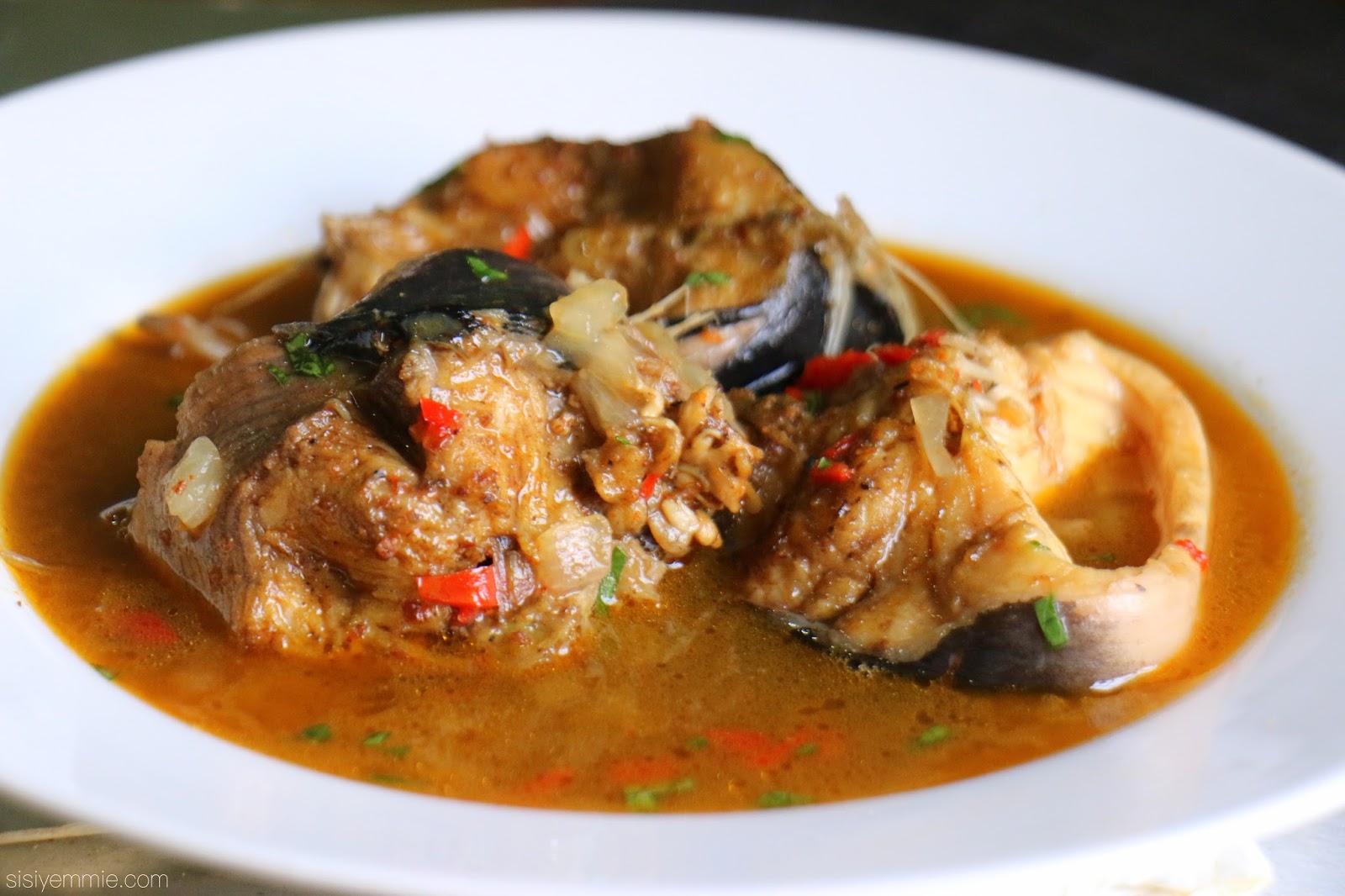Detailed Guide On How to Prepare Catfish Pepper Soup

Catfish pepper soup, also known as “point and kill,” is a beloved West African dish cherished for its rich and spicy flavor. This aromatic soup is not only a delight to the taste buds but also a comforting and nourishing dish, perfect for any occasion.
Below is a detailed guide on how to prepare this delectable catfish pepper soup. But before we dive into the preparation process of this delicacy, let’s take a look at the history
History of Catfish Pepper Soup

The history of catfish pepper soup, or “point and kill,” is deeply rooted in the culinary traditions of West Africa, particularly in countries like Nigeria, Ghana, and Cameroon. While the exact origin of this dish is challenging to trace, its popularity and significance are undeniable, and it has become a staple in the region’s cuisine.
1. Cultural Heritage:
Catfish pepper soup is deeply embedded in the cultural practices of West African communities, especially among the Igbo, Yoruba, and Hausa ethnic groups in Nigeria. The dish is often associated with communal gatherings, celebrations, and special occasions.
2. Local Ingredients:
The preparation of catfish pepper soup reflects the abundance of local ingredients available in the region. Catfish, a widely available and affordable fish species, became a natural choice for this dish. The use of aromatic spices, herbs, and vegetables adds depth to the flavor profile and enhances the nutritional value of the soup.
3. Traditional Medicine Influence:
Many of the ingredients used in catfish pepper soup, such as ginger, garlic, and certain spices, have historical roots in traditional medicine. These ingredients were believed to possess medicinal properties, including anti-inflammatory and immune-boosting effects.
4. Culinary Innovation:
Over the years, the preparation of catfish pepper soup has evolved with culinary innovations and regional variations. Different communities and households may have their unique twists on the recipe, incorporating local spices, herbs, and flavor profiles.
5. Social Significance:
Catfish pepper soup is often associated with socializing and bonding. The tradition of “point and kill” involves selecting live catfish from a tank, having it prepared immediately, and enjoying it with friends and family. This interactive and communal approach adds a social dimension to the culinary experience.
6. Celebration of Local Flavors:
The dish is a celebration of the diverse and vibrant flavors found in West African cuisine. From the heat of scotch bonnet peppers to the aromatic blend of spices like uziza, uda, and ehuru, catfish pepper soup showcases the rich and varied palette of tastes that characterize the region’s culinary heritage.
7. Adaptation and Globalization:
As West African cuisine gains recognition on the global stage, catfish pepper soup has found its way onto international menus and has become a favorite among those who appreciate bold and spicy flavors. Restaurants around the world now offer their interpretations of this iconic dish.
While the specific details of the history of catfish pepper soup may remain somewhat elusive, its enduring popularity speaks to its cultural significance and the ability of food to connect people, celebrate traditions, and tell stories that transcend generations. Today, catfish pepper soup stands as a delicious testament to the rich culinary tapestry of West Africa.
Benefits Of Catfish Pepper Soup

Catfish pepper soup, also known as “point and kill,” not only delights the taste buds but also offers a range of health benefits. Here are some of the potential advantages of consuming catfish pepper soup:
1. Rich in Protein:
Catfish is an excellent source of high-quality protein, essential for the repair and maintenance of body tissues, as well as the production of enzymes and hormones.
2. Omega-3 Fatty Acids:
Catfish, particularly the fatty varieties, contain omega-3 fatty acids. These essential fats are known for their cardiovascular benefits, including reducing inflammation, improving heart health, and supporting cognitive function.
3. Vitamins and Minerals:
The soup is often enriched with various vegetables and herbs, providing essential vitamins (such as A and C) and minerals (like iron and calcium) that contribute to overall health and well-being.
4. Immune System Support:
Ingredients like ginger, garlic, and onions, commonly used in catfish pepper soup, are known for their immune-boosting properties. They contain antioxidants and antimicrobial compounds that may help the body defend against infections.
5. Anti-Inflammatory Properties:
Some of the spices used in preparing the pepper soup, such as uziza, uda, and ginger, possess anti-inflammatory properties. These compounds may help reduce inflammation in the body and alleviate symptoms of inflammatory conditions.
6. Digestive Aid:
Ginger and garlic, common ingredients in catfish pepper soup, have been traditionally used to aid digestion. They may help alleviate digestive discomfort and promote a healthy gut.
7. Hydration:
The soup’s liquid content contributes to hydration, which is essential for various bodily functions, including digestion, nutrient absorption, and temperature regulation.
8. Weight Management:
High-protein meals, like catfish pepper soup, can contribute to a feeling of fullness, potentially aiding in weight management by reducing overall calorie intake.
9. Bone Health:
Some varieties of catfish provide a good source of phosphorus, which is essential for maintaining healthy bones and teeth.
10. Satiety and Comfort:
The warm and flavorful nature of catfish pepper soup can provide a sense of comfort and satisfaction, making it a satisfying and enjoyable meal.
While this pepper soup offers numerous health benefits, it’s essential to consume it as part of a balanced diet.
Additionally, individuals with specific dietary restrictions or health conditions should consult with a healthcare professional or nutritionist to ensure the soup aligns with their dietary needs.
Ingredients
- Catfish: 2 medium-sized catfish, cleaned and cut into steaks or chunks.
- Pepper Soup Spice Mix: 2 tablespoons (pre-made or a blend of uziza, uda, and ehuru seeds).
- Big Mama Fish Flavour
- Fresh Pepper: 2-3 Scotch Bonnet peppers, finely chopped.
- Onions: 1 medium-sized onion, finely chopped.
- Garlic: 3 cloves, minced.
- Ginger: 1-inch piece, grated.
- Stock Cubes: 2
- Fresh Herbs: A handful of scent leaves or basil, finely chopped.
- Water: 4-6 cups.
- Salt: To taste.
Instructions
1. Prepare the Catfish:
Clean the catfish thoroughly, removing scales, guts, and any unwanted parts.
Cut the catfish into steaks or chunks, depending on your preference.
2. Pepper Soup Spice Mix:
If you don’t have pre-made pepper soup spice, grind uziza, uda, and ehuru seeds together to form a fragrant spice mix.
3. Prepare Aromatics:
In a mortar or spice grinder, crush or grind the pepper soup spice mix into a fine powder.
Chop the onions, scotch bonnet peppers, and scent leaves or basil. Grate the ginger and mince the garlic.
4. Boil the Catfish:
Place the catfish pieces in a pot, add water, and bring to a boil. Allow the catfish to cook for about 5-7 minutes or until partially cooked. Drain the water and set the catfish aside.
5. Prepare the Pepper Soup Base:
In a clean pot, heat some vegetable oil. Sauté the chopped onions, garlic, and ginger until fragrant. Add the chopped scotch bonnet peppers and continue to sauté.
6. Add Spice Mix:
Stir in the ground pepper soup spice mix and continue cooking for another 2-3 minutes to release the flavors.
7. Add Water and Catfish:
Pour in the water and bring the mixture to a gentle boil. Add the partially cooked catfish to the pot.
8. Season and Simmer:
Crumble the stock cubes into the pot for added flavor (if using). Season with salt to taste. Reduce the heat to a simmer and let the soup cook for an additional 15-20 minutes to allow the flavors to meld.
9. Add Fresh Herbs and Citrus:
Stir in the chopped scent leaves or basil. Optionally, squeeze the juice of a lemon or lime into the soup for a refreshing twist.
10. Serve Hot:
Once the catfish is fully cooked and the flavors are well-developed, your pepper soup is ready to be served. Serve hot, preferably with a side of boiled rice, yams, or plantains.
Conclusion
Catfish pepper soup is a true celebration of West African culinary prowess. With its aromatic spices, fresh herbs, and succulent catfish, this dish offers a delightful and satisfying experience. Whether enjoyed on a chilly evening or as a communal feast, catfish pepper soup is sure to leave a lasting impression with its robust and flavorful character.
